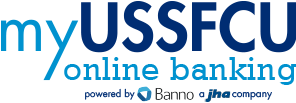How to Protect Your Money and Accounts Online
Published: August 24, 2017
Being able to bank or shop online is a great convenience, but you want to be sure you’re protecting yourself before you hit “send.” If the wrong people access your accounts, you might find yourself with a lot less in the bank than you thought. Here are six steps you can take to help make sure that does not happen.
1. Do Your Online Shopping/Banking From Home
You have probably taken steps to secure your home network, so it makes sense to do most of your online activity there. Public computers are convenient, but be careful about entering passwords and sensitive account information when using these machines. Many will keep your login data in the web browser history, so after you leave, the next person who uses the computer might be able to see what you typed and access your account.
If you are on your own laptop or mobile device but using public Wi-Fi to access the Internet, you could run into similar issues. You cannot be sure the network you’re on is secure, and if it’s not, a lurking hacker could see any information you send. When you use public Wi-Fi, consider updating the settings on your device to make sure you don’t automatically join networks you won’t use regularly.
If you have to shop or bank online while away from home, consider using a virtual private network, or VPN, service to protect your account information.
2. Install Antivirus Software
Many antivirus companies will send security patches to your computer automatically, so you don’t have to be a tech genius to get the most up-to-date protection. In addition to installing an antivirus program, it’s a good idea to check your operating system, web browser and mobile devices to make sure they also have the latest software updates.
3. Be Smart With Account Passwords
Strong passwords include both uppercase and lowercase letters, numbers and symbols, and they can’t easily be guessed. Security experts recommend that you change your passwords at least every few months.
4. Don’t skimp on mobile security
Sometimes you may need to shop or bank online while you’re on the go. When using smartphones, tablets and laptops, you can help protect your accounts by adding a password to lock your device screen. Also, install a “find your phone” tool to help locate your device if it’s misplaced. Many such tools give you the ability to disable your device remotely, in case it can’t be recovered.
5. Remember, “Secure” Starts With An “S”
Before sending over account numbers or other sensitive information, check to see whether your browser address bar begins with “https” instead of “http”. The extra “s” literally stands for “secure,” because the page is encrypted. In addition to checking for the “s,” you can also look to see whether the webpage has a seal from such organizations as the Better Business Bureau, Truste or VeriSign, which means the site is more likely to be trustworthy.
6. Shop With A Credit Card, Not A Debit Card
With a credit card, you will generally have better consumer protection. If someone makes unauthorized charges, you are only responsible for up to $50. But with a debit card, you could lose all the money in your account if you don’t report unauthorized charges in time. No matter which card you use, regularly check your statements for any charges you don’t recognize.
When you are banking or shopping online, you don’t want to leave an open door for hackers. So it’s best to secure your accounts and your devices to protect your hard-earned money.
© Copyright 2016 NerdWallet, Inc. All Rights Reserved



